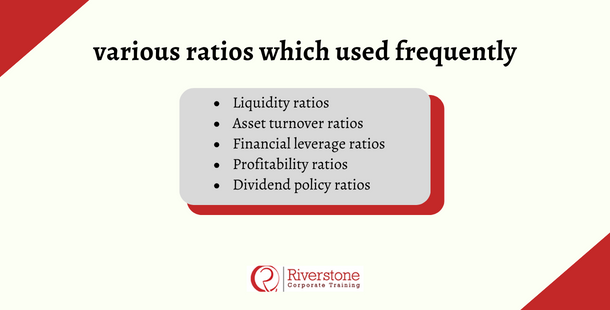Financial Ratios
Financial ratio is the relationship between two items of financial statement which indicates a firm’s performance and financial strength. Financial statement required for financial ratios includes the balance sheet, income statement, and cash flow statement, as these documents provide the essential data points for ratio calculations. Financial ratios are used to analyze strength as well as to compare financial strength to those of other firms.
Financial ratios may be used by managers within a firm, by current and potential shareholders (owners) of a firm, and by a firm’s creditors. If shares in a company are traded in a financial market, the market price of the shares used in specific financial ratios. Professionals looking to master these concepts can benefit from the best finance course for professionals, which often includes a real-world financial modeling course to apply ratio analysis in practical scenarios.
Sources of Financial Ratios
Values for financial ratios calculated from the balance sheet, income statement, cash flow statement and statement of retained earnings. A clear understanding of balance sheet structure is essential when deriving accurate ratios. Additionally, financial statement analysis for financial ratios provides deeper insights into a company’s performance and financial health. Recognizing the importance of ratio analysis for financial ratios helps stakeholders make informed decisions based on reliable and comparative data.
Financial ratios allow for comparisons
- between companies
- between industries
- between different periods for one company
- between a single company and its industry average
These ratios would be of no use unless they benchmarked against something else, like past performance and other companies. A solid foundation in understanding 10 financial ratios for financial modeling helps ensure these comparisons are meaningful and actionable in real-world financial analysis.
 There are various ratios which used frequently
There are various ratios which used frequently
- Liquidity ratios
- Asset turnover ratios
- Financial leverage ratios
- Profitability ratios
- Dividend policy ratios
Liquidity Ratios
Liquidity ratios provide information about a firm’s ability to meet its short-term obligations. OR it measures the availability of cash to pay its short-term debt.
Current ratio = current asset/current liabilities
Short term creditors prefer a high current ratio since it reduces their risk.
Quick Ratio
Current asset = inventory/current liabilities
The quick ratio is an alternative of measure of liquidity that does not include inventory in the current assets.
Cash Ratio
Cash ratio = cash + marketable securities/current liabilities
The cash ratio is an indicator of the firm’s ability to pay off its current liabilities if, for some reason, immediate payment was demanded.
Asset Turnover Ratio
Asset turnover ratio indicates how efficiently the firm utilizes its assets.
Receivable turnover ratio = Annual credit sales/account receivable
The receivable turnover often reported in terms of the number of days that credit sales remain in account receivable before they are collected.
- Average collection period = 365/Receivables turnover OR Accounts receivables/annual credit sales/365
- Inventory turnover ratio = cost of Goods Sold/ Average inventory
It is the cost of goods sold in a period divided by the average inventory level during that period.
Financial Leverage Ratio
This ratio measures the extent to which the firm is using long term debt.
- Debt ratio = total debt/total asset
- Debt-to-equity ratio = total debt/total equity
- Interest coverage ratio = EBIT/Interest charges
Where EBIT = earnings before interest and taxes
Profitability Ratio
- Gross profit margin = sales-cost of goods sold/sales
- Return on assets = Net income/total asset
It is a measure of how efficiently the firm’s asset is being used to generate profits.
Return on equity = net income/shareholders equity
Dividend Policy Ratio
This policy insight into the dividend policy of the firms and the prospects for future growth.

 There are various ratios which used frequently
There are various ratios which used frequently